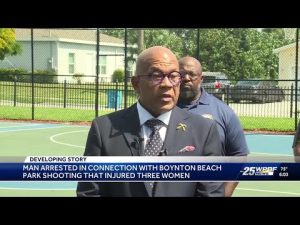#NNPA BlackPress
Global Car Designer Andre Hudson Gives Us a Peek Inside of ‘Tomorrow’s’ Self-Driving Cars
NNPA NEWSWIRE — In order to give us a peek into the future, we caught up with one of the foremost forward-thinkers and creative spirits in the field of design. Global car designer Andre Hudson, who spent the first half of his career working for both General Motors and Hyundai, recently led a team of designers and sculptors, while working at the Italy-based Icona Design, re-imagining the next wave of vehicles.
By Jeff Fortson of JeffCars.com, NNPA Newswire Contributor
Unless you’ve been literally asleep at the wheel, no pun intended, whether you’re ready or not, both electric and self-driving vehicles are in the pipeline. This next phase of passenger transportation, which is literally one of the most significant changes the industry has experienced, since the shift from horses and buggies to gasoline engine vehicles, is literally right around the corner.
![]()
Since the 60s and the airing of the cartoon The Jetsons, we’ve been hearing about fully autonomous, flying vehicles. Well, believe it or not, we’re finally closer than we have ever been. We’re literally in the mix of mapping out the next phase of the transportation system. While infrastructure will have to be put in place to accommodate how we commute, car designers around the globe are working vigorously behind the scene to reimagine the experience of traveling in a vehicle, since the traditional means of sitting behind the steering wheel will no longer be in play.
In order to give us a peek into the future, we caught up with one of the foremost forward-thinkers and creative spirits in the field of design. Global car designer Andre Hudson, who spent the first half of his career working for both General Motors and Hyundai, recently led a team of designers and sculptors, while working at the Italy-based Icona Design, re-imagining the next wave of vehicles.
Hudson is a diamond in the rough in the field of auto design. In today’s world, one has a better chance of meeting a NBA or NFL player, as opposed to a car designer, and more specifically, a Black car designer. Globally, there are only 30 Black car designers. Hudson, who is known for adding curves and sex appeal to the 2011 Hyundai Sonata, played a key role with the stylish, hot-selling four-door sedan, generating so much cash for the Korean automaker, it gave them enough confidence to develop the Genesis luxury brand. The Korean brand’s luxury flagship sedan, the G90, was also heavily influenced by the design genius.
![]()
While serving as the design director of Icona’s only U.S. studio, Hudson worked in collaboration with their studios in Germany, China and Italy, creating a fully autonomous vehicle that would finally give the world a realistic glimpse on the auto show circuit of what’s to come. The all-new, bubble-shaped Nucleus, which kind of reminds one of a flying saucer, made its international global debut, during the spring of 2018, at the Geneva International Auto Show, and its only U.S. appearance, at last November’s L. A. Auto Show.
Being that most of us weren’t even aware such a highly evolved concept vehicle existed, we wanted to go one-on-one with Hudson, who has had a hand in reshaping the future of what we now know as “tomorrow’s” passenger vehicle.
Jeff Fortson: Is the Nucleus based on a zero emissions vehicle?
Andre Hudson: The Nucleus is not based on a particular zero emissions vehicle but it is a zero emissions vehicle. The basic layout was designed to be fully electric, with the possibility of a hydrogen fuel cell supporting the battery system. Ultimately, it is about the pushing the usable interior space to the max. When level 5 autonomy becomes feasible, we will be able to remove the steering wheel and driver controls all together and use that space more efficiently. (Level 5 autonomy makes the vehicle completely self-driving.)
JF: What role did the U.S. studio that you oversaw play in the creation of the Nucleus?
AH: While the Nucleus was a global project for Icona Design, the U. S. studio led the project with all of the concept sketch development, which consisted of concept ideation and clay model development for the exterior. We also began the initial digital development of the interior in the US. As the concept size grew and came into formation, we used our global resources in design, digital modeling, and engineering to complete the Nucleus.
JF: What inspired the design?
AH: Inspiration came from many places, but most directly the idea that we wanted to make a larger mono-volume vehicle (essentially a van) into the most beautiful and sensual shape that we could. No matter what concept vehicle shapes you see produced every year, there is still no form as efficient as using a box for interior volume.
When we looked at larger vehicle designs, particularly yachts, we see this idea of a aero (or hydro) efficient shape surrounding beautifully appointed living quarters. In many ways the exterior of the Nucleus is a similar idea. On the interior we actually looked at high-end architectural spaces like those find in various premium resorts around the world and even first-class appointments found on today’s large capacity airliners.
JF: What makes the interior of the Nucleus unique?
AH: The interior of the Nucleus was meant to surprise you as you stepped inside and took a seat. It was to be the most non-automotive feeling space one could imagine. We really wanted it to feel as though you were truly in a modern lounge or a hotel suite.
It is interesting! Pictures really do not do the space justice. You have to sit in it and take in all the lines, the light and the ambiance. We did everything possible to optimize the vehicle layout. The batteries were packaged under the floor, with full autonomy, there was no space required for the steering wheel and typical driver controls, and we packaged the motors for the drive system within each of the 28-inch wheels.
Essentially, all the mechanicals (devices normally in a vehicle) were pushed outside the passenger space. This allowed us to structure the interior more like a hotel suite or a rolling lounge. When the large single sliding door and hatch opens, you see a space that is warm and inviting. Three distinct seating areas present themselves, which are finished in cream and deep blue leather. A warm, indirect light feature leads your eye from the front to the rear (this feature also is an abstraction of our Icona logo). And a beautiful deep blue wood veneer spans the floor from front to back. We divided the space up into three key zones: the office, the lounge and the loft.
Towards the front of the vehicle you’ll find the office, with a large captain chair that greets you upon entry and rotates you around 180 degrees. This is where you’ll find a full width desk, with a built-in keyboard and iPad dock. Out of this desk also raises a full-service bar, complete with ice, champagne and flutes. The front occupant will also appreciate the surrounding terrarium, housing live plants that breathe an air of life into this modern space. Centrally, you will see a wide format display used to communicate key information to all occupants.
In the mid-section (of the vehicle), which you see first when the large door opens, you see a beautifully styled chaise lounge. Totally unexpected for a vehicle, it presents itself as being more like a piece of furniture than a car seat. It is meant to evoke a feeling of style, relaxation and modernity. This space can seat two sitting side-by-side or one occupant reclined.
And towards the rear of the Nucleus you’ll find the Loft. Another captain style chair that is elevated slight above the others on a raised, back-lit platform. This seat was designed for the ‘boss’. It has been designed with a cantilevered desk that houses an iPad and blanket. The seat can also be tilted rearward to a zero-gravity position for ultimate comfort. The view over the rest of the Nucleus interior is truly spectacular from the seat.
JF: How many people can the Nucleus transport?
AH: The Nucleus was really designed around 3 occupants. Remember, space is luxury, and that’s what we wanted to demonstrate. We did think about the necessity to carry more than 3, and for that, we designed the desk in the rear. Not only does it disappear into the rear, it exposes a secondary seat to the left of the loft captain chair. Again, as mentioned before, the lounge area could accommodate 2, bringing the overall vehicle capacity to 5.
Click here or visit JeffCars.com to check out part two of our conversation with Andre Hudson. Since our interview, the highly sought after designer, has accepted a new career opportunity, as the head of design for the California-based Independence Electric. In his new role, Hudson will be helping to shape the future of electric cars.
About Jeff Fortson: He is the host of SiriusXM’s only multicultural automotive radio show. The show, which features one-on-one conversations with influencers like Hudson, can be heard weekly on Channel 141, Fridays at 12 PM ET. For additional air dates, new car reviews, used car buying tips and more, visit his website, JeffCars.com.
#NNPA BlackPress
LIHEAP Funds Released After Weeks of Delay as States and the District Rush to Protect Households from the Cold
BLACKPRESSUSA NEWSWIRE — The federal government has released $3.6 billion in home heating assistance after a delay that left states preparing for the start of winter without the program’s annual funding.

By Stacy M. Brown
Black Press USA Senior National Correspondent
The federal government has released $3.6 billion in home heating assistance after a delay that left states preparing for the start of winter without the program’s annual funding. The Low-Income Home Energy Assistance Program, known as LIHEAP, helps eligible households pay heating and cooling bills. The release follows a shutdown that stretched 43 days and pushed agencies across the country to warn families of possible disruptions.
State officials in Minnesota, Kansas, New York, and Pennsylvania had already issued alerts that the delay could slow the processing of applications or force families to wait until December for help. In Pennsylvania, more than 300,000 households depend on the program each year. Minnesota officials noted that older adults, young children, and people with disabilities face the highest risk as temperatures fall.
The delay also raised concerns among advocates who track household debt tied to rising utility costs. National Energy Assistance Directors Association Executive Director Mark Wolfe said the funds were “essential and long overdue” and added that high arrearages and increased energy prices have strained families seeking help.
Some states faced additional pressure when other services were affected by the shutdown. According to data reviewed by national energy advocates, roughly 68 percent of LIHEAP households also receive nutrition assistance, and the freeze in multiple programs increased the financial burden on low-income residents. Wolfe said families were placed in “an even more precarious situation than usual” as the shutdown stretched into November.
In Maryland, lawmakers urged the Trump administration to release funds after the state recorded its first cold-related death of the season. The Maryland Department of Health reported that a man in his 30s was found outdoors in Frederick County when temperatures dropped. Last winter, the state documented 75 cold-related deaths, the highest number in five years. Rep Kweisi Mfume joined more than 100 House members calling for immediate federal action and said LIHEAP “is not a luxury” for the 100,000 Maryland households that rely on it. He added that seniors and veterans would be placed at risk if the program remained stalled.
Maryland Gov. Wes Moore used $10.1 million in state funds to keep benefits moving, but noted that states cannot routinely replace federal dollars. His administration said families that rely on medical equipment requiring electricity are particularly vulnerable.
The District of Columbia has already mapped out its FY26 LIHEAP structure in documents filed with the federal government. The District’s plan shows that heating assistance, cooling assistance, weatherization, and year-round crisis assistance operate from October 1 through September 30. The District allocates 50 percent of its LIHEAP funds to heating assistance, 10 percent to cooling, 13 percent to year-round crisis assistance, 15 percent to weatherization, and 10 percent to administrative costs. Two percent is used for services that help residents reduce energy needs, including education on reading utility bills and identifying energy waste.
The District’s plan lists a minimum LIHEAP benefit of $200 and a maximum of $1,800 for both heating and cooling assistance. Crisis benefits are provided separately and may reach up to $500 when needed to resolve an emergency. The plan states that a household is considered in crisis if it has been disconnected from energy service, if heating oil is at 5 percent or less of capacity, or if the household has at least $200 owed after the regular benefit is applied.
The District’s filing notes that LIHEAP staff conduct outreach through community meetings, senior housing sites, Advisory Neighborhood Commissions, social media, posters, and mass mailings. The plan confirms that LIHEAP applicants can apply in person, by mail, by email, or through a mobile-friendly online application and that physically disabled residents may request in-home visits.
As agencies nationwide begin distributing the newly released funds, states continue working through large volumes of applications. Wolfe said LIHEAP administrators “have been notified that the award letters have gone out and the states can begin to draw down the funds.”
#NNPA BlackPress
Seven Steps to Help Your Child Build Meaningful Connections
BLACKPRESSUSA NEWSWIRE — Swinging side by side with a friend on the playground. Sharing chalk over bright, colorful sidewalk drawings. Hiding behind a tree during a spirited game of hide-and-seek. These simple moments between children may seem small, but they matter more than we think

By Niyoka McCoy, Ed.D., Chief Learning Officer, Stride/K12
Swinging side by side with a friend on the playground. Sharing chalk over bright, colorful sidewalk drawings. Hiding behind a tree during a spirited game of hide-and-seek. These simple moments between children may seem small, but they matter more than we think: They lay the foundation for some of life’s most important skills.
Through everyday play, young children begin learning essential social and emotional skills like sharing, resolving conflicts, showing empathy, and managing their emotions. These social skills help shape emotional growth and set kids up for long-term success. Socialization in early childhood isn’t just a “nice-to-have”—it’s essential for development.
Yet today, many young children who haven’t yet started school aren’t getting enough consistent, meaningful interaction with peers. Research shows that there’s a decline in active free play and peer socialization when compared to previous generations.
There are many reasons for this. Children who are home with a parent during the day may spend most of their time with adults, limiting opportunities for peer play. Those in daycare or preschool may have restricted free play, and large classrooms can reduce supervision and social coaching. Some children live in rural areas, are homebound due to illness, have full schedules, or rely on screens to fill their playtime. And for some families, finding other families with young children to connect with isn’t easy.
While these challenges can feel significant, opportunities for connection still exist in every community. Families can take simple steps to help children build friendships, create a sense of belonging, and strengthen social skills. Here are some ideas to get started:
- Storytime sessions at libraries or local bookstores
- Community offerings such as parent-child workshops, art, music, gymnastics, swimming, or sports programs
- Weekly events at children’s museums, which may include art projects, music workshops, or science experiments
- Outdoor exploration, where kids can play with peers
- Local parenting groups that organize playdates and group activities
- Volunteer opportunities where children can participate, such as pet adoption events or packing meals at a food bank
- Classes for kids at local businesses, including hardware, grocery, or craft stores
Some of these community activities are free or low-cost and give kids the chance to build friendships and practice social skills. Parents can also model positive social behavior by interacting with other parents and encouraging their children to play with their peers.
These may seem like small moments of connection, but they can have a powerful impact. Every time your child shares a toy, plays make-believe with peers, or races a friend down the slide, they’re not just playing—they’re learning the skills that build confidence, empathy, and lasting friendships. And it’s good for you, too. Creating intentional opportunities for play also helps you strengthen your own network of parents who can support one another as your children grow together.
#NNPA BlackPress
Seven Steps to Help Your Child Build Meaningful Connections
BLACKPRESSUSA NEWSWIRE — Swinging side by side with a friend on the playground. Sharing chalk over bright, colorful sidewalk drawings. Hiding behind a tree during a spirited game of hide-and-seek. These simple moments between children may seem small, but they matter more than we think

By Niyoka McCoy, Ed.D., Chief Learning Officer, Stride/K12
Swinging side by side with a friend on the playground. Sharing chalk over bright, colorful sidewalk drawings. Hiding behind a tree during a spirited game of hide-and-seek. These simple moments between children may seem small, but they matter more than we think: They lay the foundation for some of life’s most important skills.
Through everyday play, young children begin learning essential social and emotional skills like sharing, resolving conflicts, showing empathy, and managing their emotions. These social skills help shape emotional growth and set kids up for long-term success. Socialization in early childhood isn’t just a “nice-to-have”—it’s essential for development.
Yet today, many young children who haven’t yet started school aren’t getting enough consistent, meaningful interaction with peers. Research shows that there’s a decline in active free play and peer socialization when compared to previous generations.
There are many reasons for this. Children who are home with a parent during the day may spend most of their time with adults, limiting opportunities for peer play. Those in daycare or preschool may have restricted free play, and large classrooms can reduce supervision and social coaching. Some children live in rural areas, are homebound due to illness, have full schedules, or rely on screens to fill their playtime. And for some families, finding other families with young children to connect with isn’t easy.
While these challenges can feel significant, opportunities for connection still exist in every community. Families can take simple steps to help children build friendships, create a sense of belonging, and strengthen social skills. Here are some ideas to get started:
- Storytime sessions at libraries or local bookstores
- Community offerings such as parent-child workshops, art, music, gymnastics, swimming, or sports programs
- Weekly events at children’s museums, which may include art projects, music workshops, or science experiments
- Outdoor exploration, where kids can play with peers
- Local parenting groups that organize playdates and group activities
- Volunteer opportunities where children can participate, such as pet adoption events or packing meals at a food bank
- Classes for kids at local businesses, including hardware, grocery, or craft stores
Some of these community activities are free or low-cost and give kids the chance to build friendships and practice social skills. Parents can also model positive social behavior by interacting with other parents and encouraging their children to play with their peers.
These may seem like small moments of connection, but they can have a powerful impact. Every time your child shares a toy, plays make-believe with peers, or races a friend down the slide, they’re not just playing—they’re learning the skills that build confidence, empathy, and lasting friendships. And it’s good for you, too. Creating intentional opportunities for play also helps you strengthen your own network of parents who can support one another as your children grow together.
-

 Activism3 weeks ago
Activism3 weeks agoOakland Post: Week of November 12 – 18, 2025
-

 Activism3 weeks ago
Activism3 weeks agoIN MEMORIAM: William ‘Bill’ Patterson, 94
-

 Activism3 weeks ago
Activism3 weeks agoHow Charles R. Drew University Navigated More Than $20 Million in Fed Cuts – Still Prioritizing Students and Community Health
-

 Bay Area3 weeks ago
Bay Area3 weeks agoNo Justice in the Justice System
-

 #NNPA BlackPress3 weeks ago
#NNPA BlackPress3 weeks agoLewis Hamilton set to start LAST in Saturday Night’s Las Vegas Grand Prix
-

 #NNPA BlackPress2 weeks ago
#NNPA BlackPress2 weeks agoBeyoncé and Jay-Z make rare public appearance with Lewis Hamilton at Las Vegas Grand Prix
-

 Activism2 weeks ago
Activism2 weeks agoOakland Post: Week of November 19 – 25, 2025
-

 #NNPA BlackPress3 weeks ago
#NNPA BlackPress3 weeks agoThe Perfumed Hand of Hypocrisy: Trump Hosted Former Terror Suspect While America Condemns a Muslim Mayor




















































